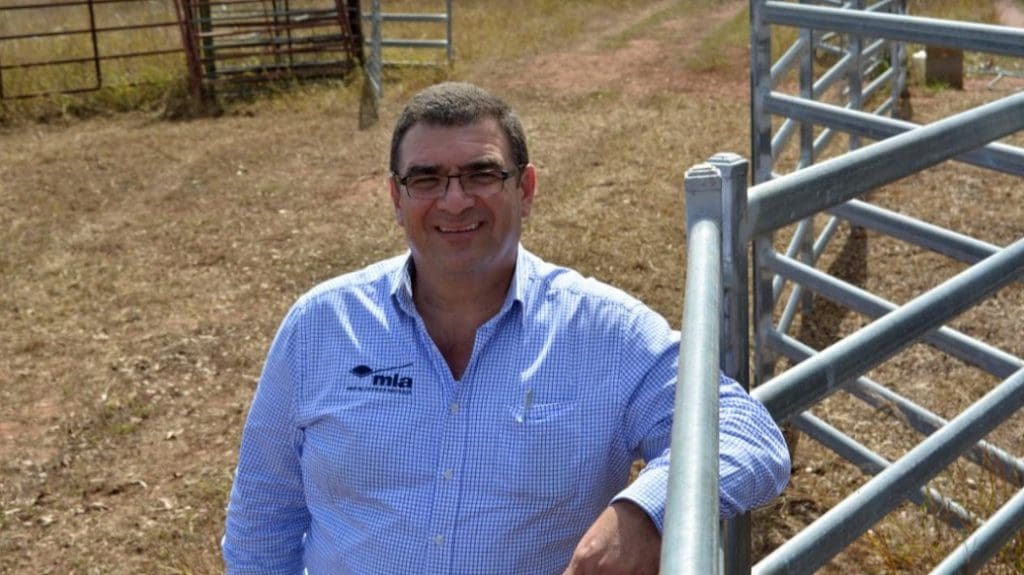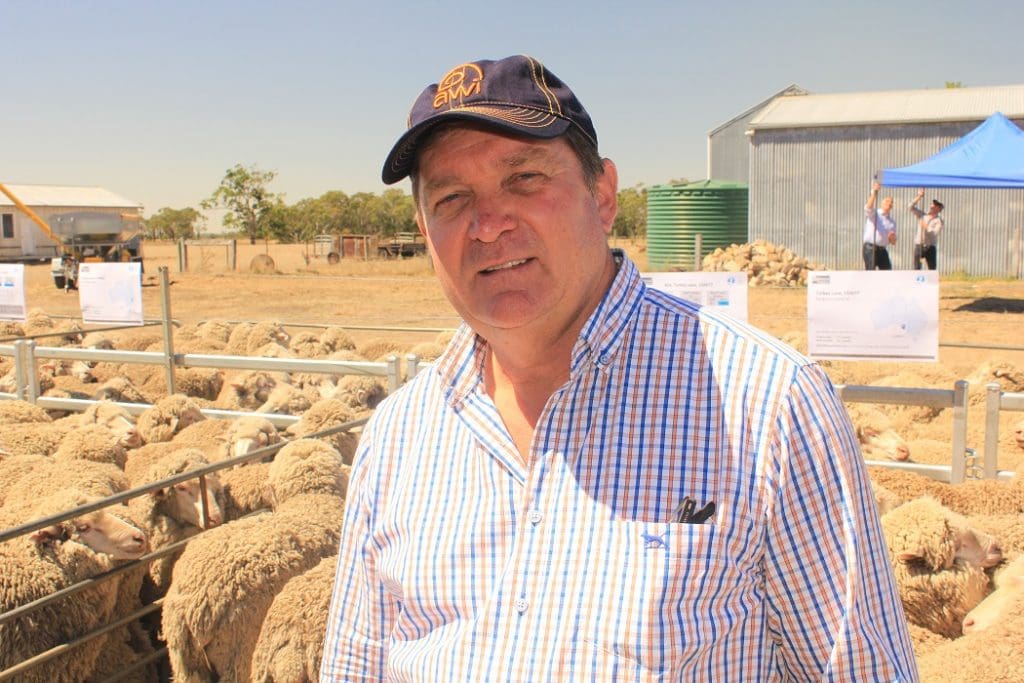
MLA managing director Jason Strong” more collaboration needed on sheep RD & E.
AUSTRALIAN rural research and development corporations need to do better on collaborating on sheep projects, Meat & Livestock Australia managing director Jason Strong told the MerinoLink conference last week.
The questioner, through conference moderator John Francis, said sheep RD & E can feel like a “two-stop shot” – between MLA and Australian Wool Innovation – and wanted to know what efforts were underway to synergise MLA and AWI RD&E efforts.
“How can this be improved?”
Mr Strong said: “We need to be better”.
“I think broadly across the RDCs, we are putting a lot of effort into collaborating better.
“We’ve got some good examples with AWI of how we are doing that, we’ve got some good examples how we’re not, so we’ve got to learn from that.”
Mr Strong said the rural RDCs had also formed Agricultural Innovation Australia for larger cross-sectoral program collaboration and for attracting other sources of funding.
“”So it’s a very topical and relevant issue that we do need to be better at.”
WoolPoll question will propose changing levy vote cycle

AWI director Don Macdonald: AWI budget “sandwiched” by 1.5pc levy vote, lower wool production and prices.
AWI director Don Macdonald said there would be a question as part of the WoolPoll levy vote process later this year that levy payers be asked about moving AWI from the current three-year cycle to a five-year cycle.
“And a lot of the reasoning behind that was so that the two organisations could get into step, so to speak.
“So that is on the agenda, that will be a question asked to levy payers at WoolPoll later this year.”
In response to another question earlier, Mr Macdonald AWI had no call for R&D projects in 2020/21 and Mr Macdonald said whether there would be a call for 2021/22 would depend on the WoolPoll result.
“We certainly got sandwiched with a 1.5 (percent) levy with the effect of the drought and the lower incomes, so 25pc lower levy actually worked more like a 40pc drop in income.
Mr Macdonald said normally there would be a call for R&D projects in December, “but at the moment with the levy, the budget is full for that period, so there won’t be a call in December.”
“There is the opportunity for people that have ideas for projects to come forward at any time and approach the company, and if there are spare resources or spare money in that particular area then they can be looked at.”
Major MLA sheep reproduction projects
Mr Strong said while the Australian sheep flock is in rebuild phase, MLA is firmly focused on activities that will support this, alongside sustainable growth in productivity and profitability for producers.
Improved genetics and reproduction rates are the focus of MLA’s current investments in sheep production research, he said.
“As a part of our focus on fewer bigger and bolder work, last year we announced the Sheep Reproductive Strategic Partnership aimed at increasing lamb production through increased weaning rates and lamb survival.
“As you are aware, this issue is a major productivity and profitability opportunity with the co-benefit of enhancing our social licence as an industry,” he said.
“The SRSP will see industry organisations working collaboratively to develop larger, longer term programs of research development and adoption work.”
Mr Strong said program extension is set to be seeded across multiple regional sites providing localised solutions for real, on-farm challenges.
“Each project prioritises planned adoption pathways and widespread opportunities for producers to be involved in learning practical ways to use the research.
Following on from the SRSP impact assessment in August 2020 a management committee has been established and a program co-ordinator recruited – Dr Sue Hatcher from Makin Outcomes.
Some of the projects under the SRSP include accelerating sheep reproduction best practice with a large scale producer demonstration site-style project focused on delivering at scale adoption of reproduction best practice to boost lamb survival and weaning rates. The project will engage 2,250 producers directly.
Another project will look at the design, establishment and benefits of edible shelters to improve lamb survival and whole-farm profitability, involving the establishment of more than 30 whole-farm demonstration sites, across six climatic zones in Western Australia and New South Wales, engaging at least 2000 producers and consultants.
An MLA heat stress in ewes project will look at the impacts of heat stress on sheep reproductive performance on six research sites (five on commercial properties) for three reproductive cycles across diverse agro-ecological zones in WA and NSW sheep wheat zones and the pastoral rangeland areas.
MLA is also working on the commercial validation of using melatonin implants to improve twin lamb survival on 15 commercial properties.
Mr Strong said MLA is moving into the second year of its current five-year strategic plan, with the annual investment plan now finalised for the coming year.
“Our plan is deliberate in its intent to deliver transformational change and in doing so build a sustainable, more profitable, and resilient red meat industry.
“We have set about to target major strategic challenges and rethink traditional approaches to how we operate, looking at greater collaboration and increasing connections across our supply chain,” he said.
“This meant a fundamental shift in our approach to direct our investments in fewer but much larger programs with ongoing positive impact.”

The big problem for the sheep industry in the future appears to be lack of numbers. In particular, the number of Merinos.
Amongst this, some Merino producers are achieving great weaning rates, while others are struggling and dropping out of the industry.
Before a huge project is launched I would suggest find producers in each group and find what they are doing to produce their results.
I believe the results will show a stark variation in sheep type within Merino industry. The work has been done, but the adoption of the modern Merino is lagging, due to producers’ lack of will to make a change. Fortunately, the answers to the problems are already available.
Mr Strong, to get people to eat meat all over the world, all farmers need to produce is tenderness and taste. The thing that makes meat not tender is connective tissue. Breed sheep with no connective tissue, problem solved. The thing that makes meat taste good is fat. Breed sheep with some selvedge fat to give a thin cover on the meat to protect it and the fat in the meat; intra-muscular fat. End of story.
We don’t need fifteen people to change a light bulb. Farmers know how to breed more lambs. Please, keep asking yourself who is benefiting from the levies?
Mr Strong, what has happened to all the farmers, why have they lost their ability to work things out for themselves? All these research projects you are wanting to set up: edible shelters, 30 whole farm demonstration sites, 2000 producers and consultants. Who is financing all this? Why have farmers got to rear their own family plus another two hundred families with levies being paid? Advisors and research projects are burning farmers’ money at an alarming rate. Surely, farmers can work out if melatonin implants are right for them. Does the farmer really need all these projects or is it an exercise in creating an extra team of people, to justify the organisation? What is it about spending other people’s money?
Thank God AWI had no call on R&D projects because of lack of funds. About time. We have got to put the brakes on these organisations. Management committees have been established, a program co-ordinator recruited. Why do all organisations keep growing? The farmer has to keep kicking the tin when there is enough expenditure on their own farms with updating technology, etc.
The MerinoLink conference, how many professionals and how many farmers attended? Who financed it?